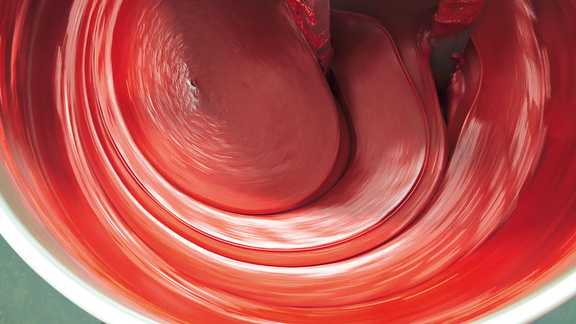Freudenberg Sealing Technologies has more than 1,500 elastomer mixtures, each created to suit a variety of different operating parameters. But where does the raw material for your Silicone, Fluoro, or Perfluoroelastomer seal come from, and how does it start the process of becoming a seal?
 Elastomers are multi-component systems that are composed of up to 15 different raw materials. Given their very different weight proportions and an extremely wide range of textures, the individual raw materials must be mixed together homogeneously. While rubber is delivered in ball or chip form and is only capable of flowing at the processing temperature, softeners are generally present in the form of flowable oils. The goal of mixing is to distribute all the required raw materials evenly within the polymer matrix and to break up agglomerates to allow the optimal bonding of the filler particles to the polymer. For the most part, the variety of different components cannot be incorporated in a single work step. This is particularly true for mixtures that contain fine soots or natural rubber as their polymer base.
Elastomers are multi-component systems that are composed of up to 15 different raw materials. Given their very different weight proportions and an extremely wide range of textures, the individual raw materials must be mixed together homogeneously. While rubber is delivered in ball or chip form and is only capable of flowing at the processing temperature, softeners are generally present in the form of flowable oils. The goal of mixing is to distribute all the required raw materials evenly within the polymer matrix and to break up agglomerates to allow the optimal bonding of the filler particles to the polymer. For the most part, the variety of different components cannot be incorporated in a single work step. This is particularly true for mixtures that contain fine soots or natural rubber as their polymer base.
Mixing Process
The mixing process in four steps:
1. The cold raw polymer, which is fed into the mixing chamber in pieces, is pulverized by two counter-rotating rotors and heated due to the resulting shearing forces. In the process, the polymer develops the ability to flow.
2. Next, the added filler and softener are incorporated until a coherent mass forms.
3. The fillers, especially the soots, are present as agglomerates, which the shearing forces reduce.
4. The pulverized fillers are then evenly distributed into the polymer matrix.
In each step of the mixing process, there is continual monitoring and documentation of the most important process parameters, including temperature, rotational speed, time and energy, to ensure the quality of the mixture. From the provision of the raw material to the completed mixture, a series of process steps is needed for the production of each individual batch. To guarantee the material flow, a range of special equipment is needed – from the weighing unit, to the rubber splitter, rolling mill and internal mixer, all the way to the batch-off unit.
From the Mixer into the Rolling Mill
After the weighing and the mixing, the mixture is further homogenized in the rolling mill. Rolling mills consist of two temperature-controlled rollers, one behind the other, which rotate against one another at different rotational speeds. The friction between the rollers and the mixture ensures that the rolled-out mixture generally adheres to the more slowly rotating front roller. The mixture is cooled down on the roller – its temperature can be as high as 150°C after the mixing process and it can homogenize further. After the cooling phase, temperature-sensitive accelerants and chemicals to promote vulcanization can be added onto the roller.
Since elastomers are made-to-order materials, a manufacturer must be able to produce and manage a wide variety of different mixtures. Freudenberg Sealing Technologies has more than 1,500 mixtures. During manufacturing, computer-controlled systems handle order processing and raw material management, along with process and quality control.
